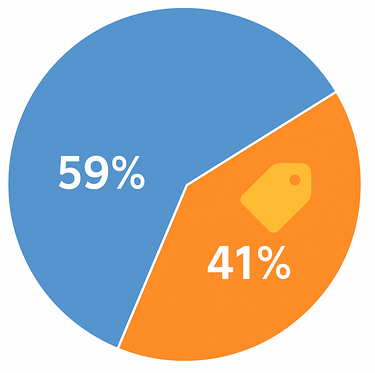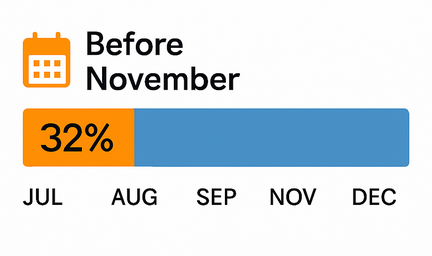Customer intent changes throughout the year, shaped by seasonal events, holidays, and predictable behavioral shifts. Brands that recognize and act on these patterns can significantly increase engagement and conversions. Seasonal intent is more than a rise in traffic; it reflects specific motivations, expectations, and buying signals.
This article breaks down key types of seasonal intent, provides actionable insights, and explains how businesses can adapt strategies to meet customers at the right moment.
The Impact of Seasonal Intent
Seasonality has a measurable influence on purchasing behavior. Research shows that nearly 60% of consumers plan purchases around seasonal events. During high‑intent seasons, conversions can increase by up to 30% when campaigns align with customer motivations.

41% of consumers plan purchases around seasonal discounts
Holiday periods also drive predictable behavior spikes. For example, more than 70% of shoppers actively search for discounts in the weeks before major holidays, and up to 50% are more responsive to retargeting ads during these peak windows.
Types of Seasonal Intent
1. Event‑Driven Intent
This includes holidays, back‑to‑school, and annual industry-specific events. Customers often show increased urgency and a clear goal when shopping during these periods.
2. Weather‑Based Intent
Temperature and climate shifts influence product demand. Warm seasons push interest in travel, outdoor gear, and beverages, while colder months increase searches for home comfort and gifting.
3. Trend‑Based Intent
Cultural trends, viral content, or platform‑wide behavior shifts can create micro‑seasonal patterns that temporarily boost demand.
How to Identify Seasonal Intent
Analyze Historical Data
Patterns repeat. Reviewing last year’s metrics helps predict when users are most likely to convert.
Track On‑Site Behavior
Higher engagement with specific product categories often signals rising intent ahead of seasonal peaks.
Monitor Search Patterns

32% of consumers plan to begin holiday shopping before November
A spike in search queries related to holiday deals or seasonal needs is an early indicator of upcoming demand.
Turning Seasonal Intent Into Conversions
Create Timely Campaigns
Launch ads earlier than your peak season. Many shoppers begin researching 2–4 weeks before making a purchase.
Use Seasonal Retargeting
As many as 45% of warm leads who showed interest during a seasonal window convert when retargeted with relevant messaging.
Highlight Seasonal Value
During peak periods, customers look for urgency. Limited‑time offers, countdowns, and seasonal bundles can boost conversions significantly.
Personalize Messaging
Personalization matters even more during seasonal moments. Studies show that 71% of customers expect tailored messages during key shopping periods.
Example Strategy: Preparing for a Holiday Surge
-
Review last year’s top‑performing segments.
-
Build custom audiences based on early‑season engagement.
-
Prepare multiple creative variations reflecting seasonal needs.
-
Launch retargeting campaigns as soon as interest spikes.
-
Optimize messaging as you observe behavior trends.
Recommended Articles
Conclusion
Seasonal customer intent provides one of the strongest opportunities for brands to drive higher conversions. By recognizing behavioral changes, tracking early interest signals, and adapting campaigns to seasonal motivations, businesses can significantly improve performance throughout the year.

